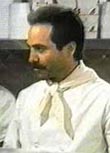|
|
This topic comprises 2 pages: 1 2
|
|
Author
|
Topic: Lamp Current
|
|
|
Andy Muirhead
Master Film Handler

Posts: 323
From: Galashiels, Scotland
Registered: Dec 2000
|
 posted 12-16-2002 07:08 PM
posted 12-16-2002 07:08 PM




Hi William
First things first, assuming that when you say you are running your 1600W bulb at 85% of the rated amps, do you mean wattage? If so that would mean your running at 1360W, which seems a bit low for a 1600W. In fact slightly below the recommended level.
To really answer your question, we would have to know how many Volts and Amps you were supplying the bulb. Under running a bulb can be just as catastrophic on longevity than over running. You should really aim for the 1600W mark from day one, I don't believe there's anything to gain by under-running, I imagine quite the opposite.
I'm sure the rest of the guys will pipe in soon, but I think I covered the basics, and If i'm wrong at all, I will admit it!
Also, I haven't heard of the brand your using at all in the UK, There is a reason why most people stick to Osram, LTI, etc! And it's not the prices!
| IP: Logged
|
|
|
|
|
|
|
|
|
|
|
|
|
|
|
|
|
|
|
|
|
|
|
|
|
|
|
|
|
|
All times are Central (GMT -6:00)
|
This topic comprises 2 pages: 1 2
|
Powered by Infopop Corporation
UBB.classicTM
6.3.1.2
The Film-Tech Forums are designed for various members related to the cinema industry to express their opinions, viewpoints and testimonials on various products, services and events based upon speculation, personal knowledge and factual information through use, therefore all views represented here allow no liability upon the publishers of this web site and the owners of said views assume no liability for any ill will resulting from these postings. The posts made here are for educational as well as entertainment purposes and as such anyone viewing this portion of the website must accept these views as statements of the author of that opinion
and agrees to release the authors from any and all liability.
|

 Home
Home
 Products
Products
 Store
Store
 Forum
Forum
 Warehouse
Warehouse
 Contact Us
Contact Us




 Printer-friendly view of this topic
Printer-friendly view of this topic










![[Smile]](smile.gif)

![[Eek!]](eek.gif)

![[Big Grin]](biggrin.gif)
![[thumbsup]](graemlins/thumbsup.gif)
![[Frown]](frown.gif)



